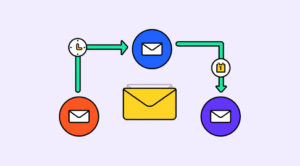How to Use Challenge-Based Marketing to Fill Your Online Course

The first time I ran a five-day photography challenge, I expected maybe 50 sign-ups. By day three, over 600 people were actively participating, posting their daily photos, and engaging more enthusiastically than I’d seen in any previous marketing effort. When the challenge concluded, nearly 40% converted into my paid course—shattering my previous launch conversion rate of 12%.
This wasn’t mere luck. Challenge-based marketing taps into powerful psychological triggers that traditional course promotions often miss entirely.
Why Challenges Work When Traditional Marketing Fails
Traditional course marketing faces an inherent obstacle: potential students must make substantial commitments (both financial and time-based) before experiencing any real transformation. This creates natural resistance, especially for creators without established reputations.
Challenges flip this dynamic entirely. They offer immediate value through bite-sized, achievable experiences that deliver quick wins while simultaneously building anticipation for the comprehensive solution your course provides.
This approach aligns perfectly with what behavioral scientists call “the consistency principle”—once someone takes small actions toward a goal and experiences positive results, they become significantly more likely to commit to larger related actions. The challenge becomes the bridge between initial interest and course enrollment.
According to Digital Marketer’s research, pre-launch challenges can increase conversion rates by 200-300% compared to standard launch sequences without sacrificing long-term student satisfaction or completion rates.
Designing Your Challenge Architecture
Effective challenges balance several elements that work together to create both transformative experiences and natural course transitions.
First, choose a tangible outcome that participants can achieve within your challenge timeframe. This outcome should deliver genuine value while simultaneously revealing the need for your more comprehensive course solution. The perfect challenge outcome proves your teaching effectiveness while highlighting the benefits of continued learning.
Next, determine your ideal duration. While 5-7 day challenges typically perform best for most topics (balancing commitment with completion rates), your subject matter may require adjustment. Technical skills might work better in 3-day intensive formats, while lifestyle changes might benefit from 10-14 day approaches allowing for habit formation.
At Course Promotion, we’ve found that structured daily components create the highest engagement rates. Each day should include:
A clear, achievable action that builds toward the promised outcome. These actions should require just enough effort to feel meaningful without overwhelming participants.
Teaching content that provides context and guidance for the daily action. This demonstrates your teaching style while providing essential knowledge.
A community component that encourages sharing progress and questions. This creates accountability and builds relationships between participants.
Recognition opportunities that celebrate progress and participation. Public acknowledgment of effort dramatically increases continued engagement.
The Psychology of Challenge Conversion
Understanding why challenges convert participants to students helps optimize your approach. Several psychological principles come into play:
The investment principle works in your favor as participants devote time and energy to your challenge. This creates a subtle sense of commitment that makes continued learning feel natural rather than forced.
Identity shifts begin occurring as participants start seeing themselves differently through their challenge actions. Someone who successfully completes daily writing prompts in your challenge begins identifying as “a writer”—making your comprehensive writing course a logical next step for their new identity.
Proof of concept happens organically as participants experience initial results. These small wins build confidence in both your teaching approach and their ability to implement what you teach.
Community belonging develops through shared experience. The relationships formed during challenges create powerful social influences toward continued participation in your broader course community.
Structuring Your Challenge for Natural Course Transition
The bridge between your free challenge and paid course requires thoughtful architecture. Consider this framework:
Begin by selecting challenge content that showcases your teaching approach while carefully avoiding complete comprehensiveness. Your challenge should demonstrate your expertise while naturally revealing areas where deeper learning would create exponentially better results.
Throughout the challenge, strategically highlight limitations of the condensed format. These aren’t presented as deliberate omissions but as natural constraints of the abbreviated timeframe.
Include regular “expansion moments” where you briefly mention how particular concepts connect to more advanced applications covered in your full course. These create curiosity without feeling like constant pitching.
On the final challenge days, explicitly connect challenge accomplishments to the bigger transformation your course offers. This isn’t selling—it’s simply showing the logical progression from what they’ve already experienced.
Challenge Delivery Mechanics That Drive Engagement
The delivery structure of your challenge significantly impacts both completion rates and ultimate course conversions.
Email remains the backbone of most successful challenges, providing reliable daily communication. Structure your challenge emails for scannability with clear action steps highlighted, but include enough teaching context to deliver genuine value.
Consider supplementing emails with additional engagement channels. Private Facebook groups create community momentum through visibility of others’ participation. Daily live videos (even brief ones) build deeper connection through your presence and tone. Mobile apps or specialized platforms like Mighty Networks can create immersive experiences for appropriate topics.
Regardless of platform, establish clear participation expectations. Will daily check-ins be required? Should participants post their progress publicly? Creating structured engagement opportunities increases both completion and conversion rates.
Launching Your Challenge for Maximum Impact
The promotional approach for your challenge differs from standard course marketing. Since the commitment barrier is lower, focus messaging on immediate benefits rather than long-term transformation.
Frame your challenge promotion around specific pain points your audience is currently experiencing. The language should emphasize quick wins and manageability: “Finally understand the basics of bookkeeping in just 5 days” rather than “Become a financial expert.”
Create urgency through cohort-based timing. Scheduled start dates with registration windows create momentum and FOMO (fear of missing out) that ongoing enrollment cannot match.
Leverage the power of community anticipation by highlighting the group experience. Many participants join challenges specifically for the accountability and connection aspects—sometimes even more than the content itself.
Optimizing the Challenge-to-Course Bridge
The transition from free challenge to paid course represents your critical conversion point. This bridge requires strategic construction:
Time your course invitation carefully. The sweet spot typically falls near the end of your challenge when participants have experienced meaningful progress but can clearly see how much further they could go with proper guidance.
Frame your course offer as the natural next step rather than an upsell. Language like “continue your progress” and “build on what you’ve already accomplished” reinforces continuity rather than introducing a separate decision.
Create special incentives that honor challenge participation. Challenge-exclusive bonuses, early access windows, or special cohort opportunities acknowledge their initial commitment while encouraging continued engagement.
Include social proof specifically from previous challenge participants who continued to your course. These testimonials addressing the exact transition decision point are significantly more effective than general course testimonials.
Managing the Operational Aspects of Challenges
Behind the scenes, challenges require operational systems for smooth execution. Consider these practical elements:
Automation becomes essential as your challenge participant numbers grow. Pre-scheduling emails, welcome sequences, and reminder systems prevents daily manual work while ensuring consistent experiences.
Support systems should anticipate common questions and technical issues. Prepare templates for frequent inquiries and consider designating community moderators to assist with participant questions.
Content delivery platforms need careful consideration. Will you host videos on established platforms or your own website? Will downloadable materials require login access? These decisions impact both user experience and your administrative workload.
Data collection throughout the challenge provides valuable optimization insights. Track not just completion rates but engagement patterns, common sticking points, and natural attrition moments. This data guides both challenge improvements and course offer refinements.
Extending Challenge Impact Beyond Initial Conversion
While immediate course conversion remains the primary goal, sophisticated challenge marketers find additional value in the challenge ecosystem:
Repurpose challenge content for ongoing marketing assets. Participant success stories, question compilations, and challenge highlights create compelling social proof for future promotions.
Create alumni opportunities for past challenge participants. Special refresher events or advanced challenges maintain connection with those who didn’t initially convert while creating additional conversion opportunities.
Develop challenge spinoffs addressing adjacent topics or more specific applications. These create natural funnels for different segments of your audience while demonstrating the breadth of your expertise.
Analyze challenge completion patterns for new course development insights. Areas where participants consistently struggled may indicate opportunities for new focused course offerings.
The Ethics of Challenge Marketing
As with any marketing approach, ethical considerations should guide your challenge development:
Deliver genuine standalone value regardless of course conversion. Your challenge should create meaningful results even for those who never purchase your course.
Maintain transparency about the relationship between your challenge and paid offerings. While constant selling feels inappropriate, hiding your business model creates distrust.
Honor privacy expectations around challenge participation. Always obtain clear permission before using participant stories, images, or questions in future marketing.
Set realistic expectations about both challenge outcomes and course benefits. Overpromising either creates disappointment that undermines your credibility and damages conversion rates.
Conclusion: From Challenge Participants to Lifelong Students
The most effective challenge-based marketing transcends simple conversion tactics to create genuine relationships with potential students. When designed thoughtfully, challenges demonstrate your teaching effectiveness, build community around your topic, and create natural desire for your more comprehensive solutions.
Begin with a clearly defined outcome that matters to your ideal students. Structure daily actions that build momentum while revealing the benefits of deeper learning. Create community experiences that support accountability and connection. Then present your course as the logical continuation of their already-successful journey.
This approach not only fills your course with highly-motivated students but creates an ecosystem of engagement that extends far beyond traditional marketing approaches. In an increasingly crowded online education marketplace, challenges create the meaningful connections and demonstrated value that transform casual browsers into committed students.





